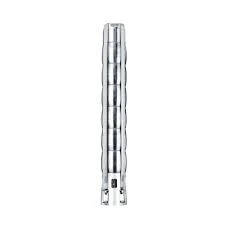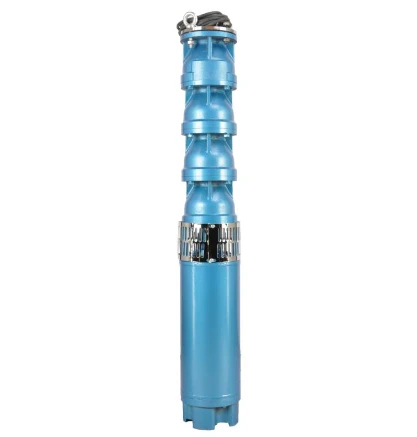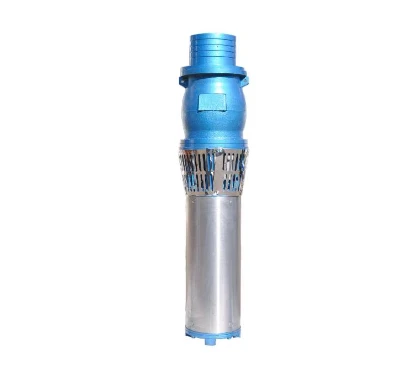ធ្នូ . 10, 2024 19:47 Back to list
Submersible Pumps Comparison Between Oil-Filled and Water-Filled Options
Submersible Pump Oil-Filled vs. Water-Filled
Submersible pumps are essential tools employed in a variety of applications, from dewatering construction sites to facilitating water supply in agricultural settings. One of the critical decisions when selecting a submersible pump is whether to choose an oil-filled or water-filled model. Each type has its advantages and disadvantages, and understanding these differences can significantly impact performance, longevity, and efficiency.
Oil-Filled Submersible Pumps
Oil-filled submersible pumps are commonly characterized by their use of oil as a means of cooling and lubrication. In these pumps, the motor is often completely submerged in a reservoir of oil, which serves multiple purposes. First, oil provides superior cooling for the motor, which is particularly beneficial in high-temperature environments. Unlike water, which can be less effective in some situations, oil maintains a stable viscosity over a wider range of temperatures.
Additionally, oil-filled pumps are typically well-sealed, preventing external contaminants such as sand or silt from entering the motor cavity. This feature significantly enhances the durability and lifespan of the pump, making it a preferred choice for industrial applications where reliability is crucial. Moreover, oil-filled submersible pumps often have greater performance capabilities, allowing them to handle higher pressures and generate more power compared to their water-filled counterparts.
However, one of the disadvantages of oil-filled pumps is the potential risk of leaks. Although these pumps are designed to be sealed, in case of a failure, oil spills can lead to significant environmental hazards. Proper installation and regular maintenance are essential to mitigate these risks. Another consideration is the price; oil-filled pumps tend to be more expensive due to their complex design and higher-quality materials.
Water-Filled Submersible Pumps
submersible pump oil vs water filled

In contrast, water-filled submersible pumps utilize water as the cooling and lubricating medium. These pumps are often simpler in design and are typically less expensive than oil-filled models. Water-filled pumps are easier to maintain due to their straightforward construction, and they generally require less energy to operate, making them a cost-effective solution for various applications.
One of the significant advantages of water-filled pumps is their environmental safety; since they use water, the risks associated with oil leaks are eliminated. This characteristic makes them suitable for residential applications, such as draining basements or swimming pools, where environmental concerns are paramount. Additionally, these pumps tend to be lighter and more portable than oil-filled pumps, enhancing their versatility for occasional use.
On the downside, water-filled pumps can struggle in extreme temperature conditions. Water, unlike oil, can freeze under low temperatures and may not provide sufficient lubrication at high temperatures, which can lead to overheating and subsequent damage. Moreover, these pumps may not be suitable for heavy-duty industrial applications, where higher pressures and power outputs are required.
Choosing the Right Pump
When deciding between oil-filled and water-filled submersible pumps, the application plays a critical role. For industrial, agricultural, or other demanding environments requiring robust performance and durability, oil-filled pumps may be the better choice. On the other hand, for residential applications or scenarios where cost and environmental impact are significant factors, water-filled pumps may provide a more suited solution.
In conclusion, both oil-filled and water-filled submersible pumps have inherent advantages and challenges. Understanding the specific requirements of your application, including environmental conditions, the importance of reliability, and budget constraints, will guide you in making the best choice. Careful consideration of these factors ensures that you select the appropriate pump to meet your needs while maximizing efficiency and longevity.
-
Submersible Well Pumps Buying Guide
NewsMay.14,2025
-
Submersible Sump, Dirty Water, Borehole Pumps Demystified
NewsMay.14,2025
-
Stainless Steel Submersible Pumps Superior Performance
NewsMay.14,2025
-
High Flow Submersible Well Pumps Essential Features
NewsMay.14,2025
-
Choosing the Best Stainless Well Pump
NewsMay.14,2025
-
A Comparison of Submersible Pumps Filled with Water and Oil
NewsMay.14,2025
-
 Submersible Well Pumps Buying GuideReliable access to clean water is fundamental for residential, agricultural, and commercial operations, making the selection of an appropriate well pump system one of the most important infrastructure decisions.Detail
Submersible Well Pumps Buying GuideReliable access to clean water is fundamental for residential, agricultural, and commercial operations, making the selection of an appropriate well pump system one of the most important infrastructure decisions.Detail -
 Submersible Sump, Dirty Water, Borehole Pumps DemystifiedThe world of water management has undergone a technological revolution, with advanced pumping systems now offering unprecedented efficiency and reliability across diverse applications.Detail
Submersible Sump, Dirty Water, Borehole Pumps DemystifiedThe world of water management has undergone a technological revolution, with advanced pumping systems now offering unprecedented efficiency and reliability across diverse applications.Detail -
 Stainless Steel Submersible Pumps Superior PerformanceModern water extraction and fluid handling systems demand equipment capable of withstanding harsh environments while maintaining peak efficiency.Detail
Stainless Steel Submersible Pumps Superior PerformanceModern water extraction and fluid handling systems demand equipment capable of withstanding harsh environments while maintaining peak efficiency.Detail
